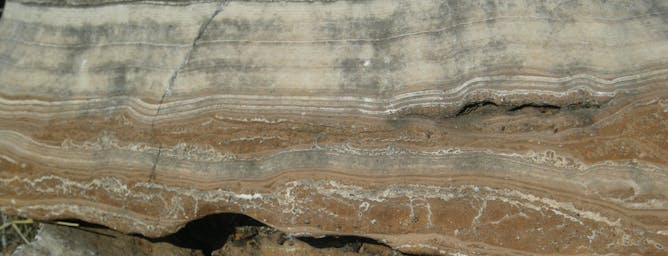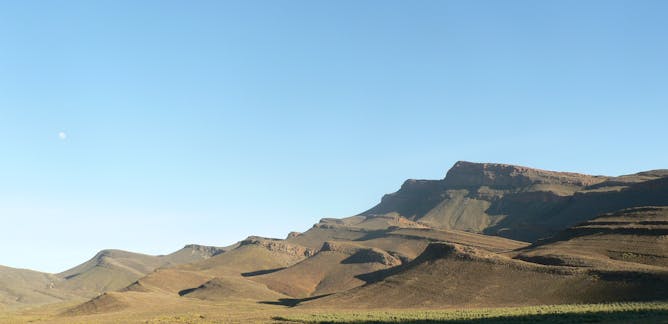|
Scientists have long known that one of the best ways to understand the world around us today is to look back in time. In South Africa, for instance, the caves in the Cradle of Humankind hold incredible detail in their rocks and sediment about the time during which they formed. Robyn Pickering discusses how she and others tapped into those details with a clever dating method - and what their results mean.
And new research has revealed that intricate stone tools were being in China way earlier than was previously believed. Ben Marwick, Bo Li and Hu Yue explain.
|

Beautifully preserved flowstone and sediment layers from the Cradle of Humankind.
Dr Robyn Pickering
Robyn Pickering, University of Cape Town
South Africa's fossils can step out of the shadows of being undated and undateable.
|

Several of the newly identified stone tools – unearthed from a museum collection.
Hu Yue
Ben Marwick, University of Washington; Bo Li, University of Wollongong; Hu Yue, University of Wollongong
A fresh look at museum artifacts fills in a gap in the Asian archaeological record and refutes the idea that an advanced technique was imported from the West by early modern humans.
|
|
|

Cameron Penn-Clarke, University of the Witwatersrand
A record of sea-level change from 400 million years ago in South Africa, reveals how ecosystems and environments collapsed at the South Pole.
| |

Ozren Bogdanovic, Garvan Institute
The marine creature amphioxus allows scientists to explore some of the steps that took place as simple creatures evolved to become complex animals.
|
|
|
Health + Medicine
|
-
Karen Hind, Durham University; Charlotte Roberts, Durham University
Analysis of bones from over hundreds and thousands of years ago suggests that our skeleton today is more fragile than that of our ancestors.
|
|